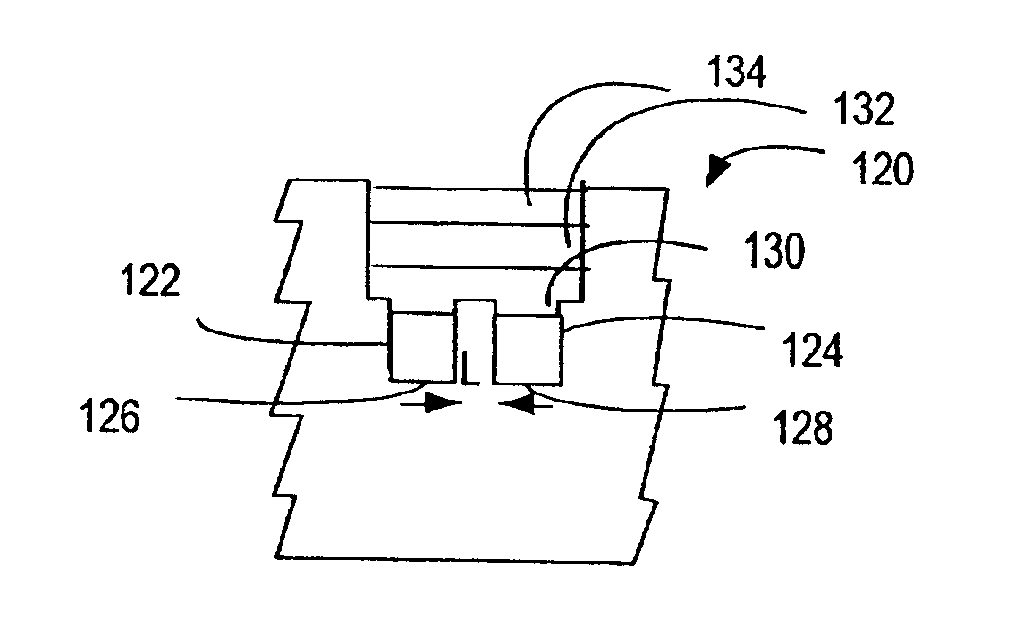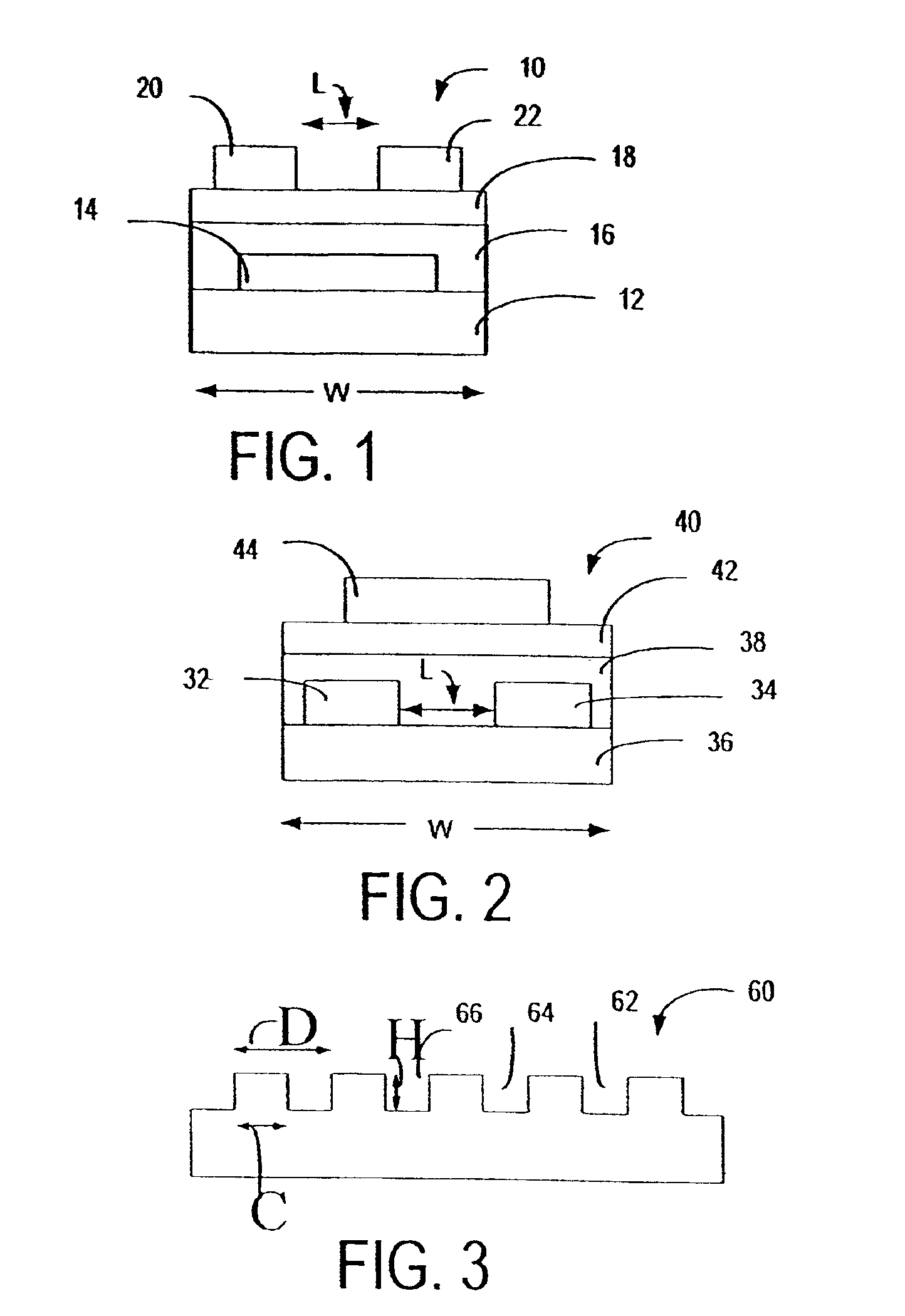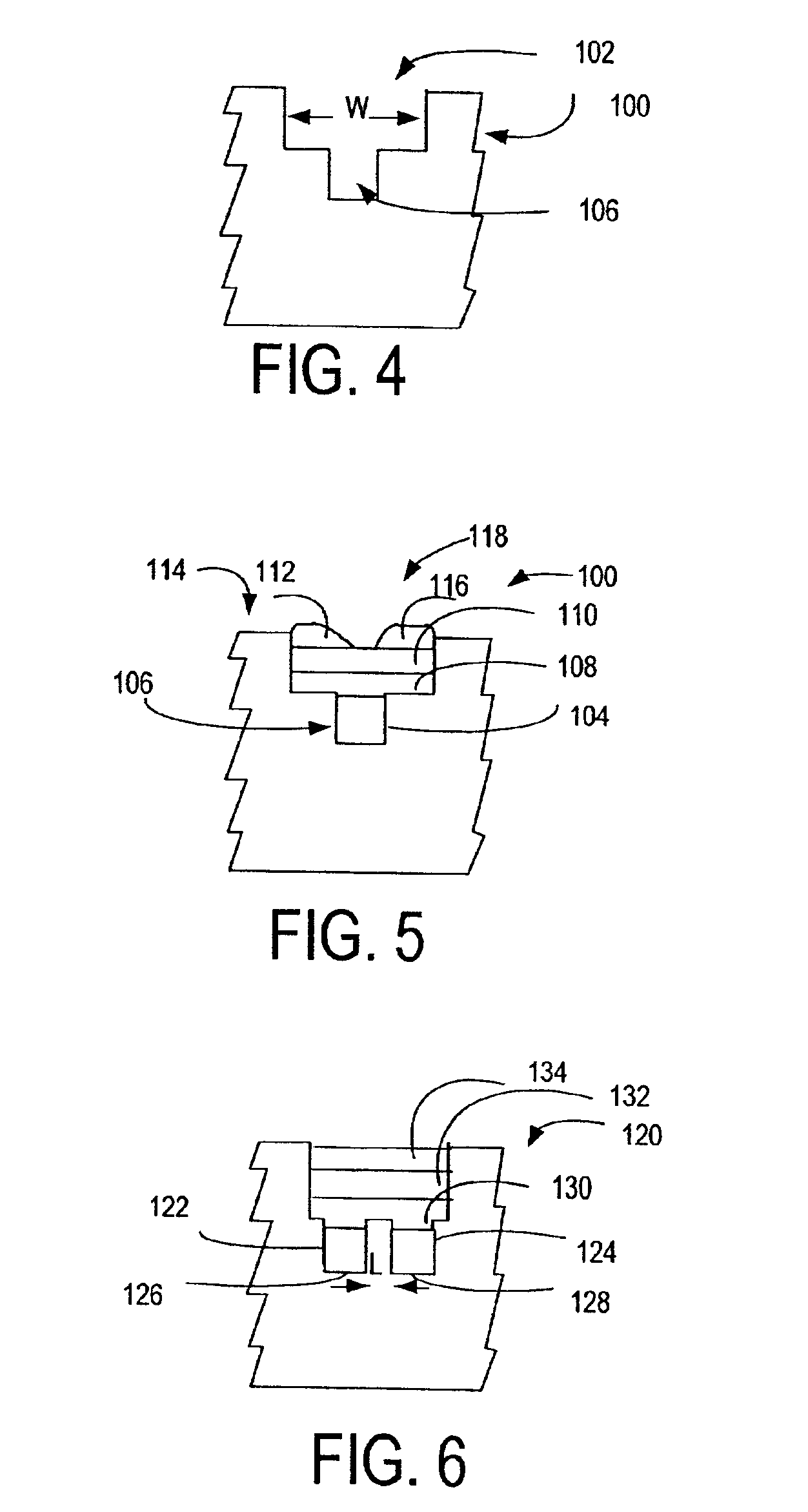Pre-patterned substrate for organic thin film transistor structures and circuits and related method for making same
- Summary
- Abstract
- Description
- Claims
- Application Information
AI Technical Summary
Benefits of technology
Problems solved by technology
Method used
Image
Examples
Embodiment Construction
[0038]Turning now to the drawings and considering the invention in further detail, an organic thin film transistor (OTFT) structure having a bottom gate configuration is illustrated in FIG. 1 and is generally designated 10. An organic thin film transistor (OTFT) structure having a top gate configuration is illustrated in FIG. 2 and is generally designated 40. As described above, the OTFT structure is deposited on a substrate 12 and in the case of the bottom gate configuration shown in FIG. 1, the gate 14 is deposited on the substrate 12 and is surrounded by an insulating layer 16. An organic semiconductor layer 18 is deposited on the insulating layer 16. The source 20 and the drain 22 are deposited on the organic semiconductor layer 18 and are spaced from one another a distance L.
[0039]In the case of a top gate OTFT structure configuration, as illustrated in FIG. 2, the source 32 and the drain 34 electrodes are deposited on the substrate 36 and are spaced a distance L from one anoth...
PUM
 Login to View More
Login to View More Abstract
Description
Claims
Application Information
 Login to View More
Login to View More - R&D
- Intellectual Property
- Life Sciences
- Materials
- Tech Scout
- Unparalleled Data Quality
- Higher Quality Content
- 60% Fewer Hallucinations
Browse by: Latest US Patents, China's latest patents, Technical Efficacy Thesaurus, Application Domain, Technology Topic, Popular Technical Reports.
© 2025 PatSnap. All rights reserved.Legal|Privacy policy|Modern Slavery Act Transparency Statement|Sitemap|About US| Contact US: help@patsnap.com



